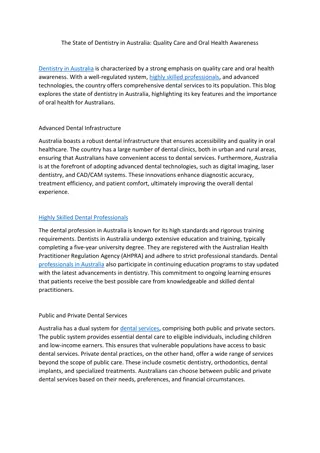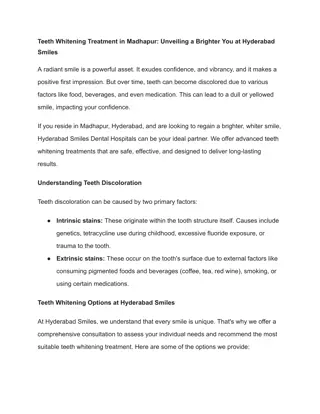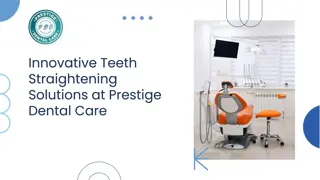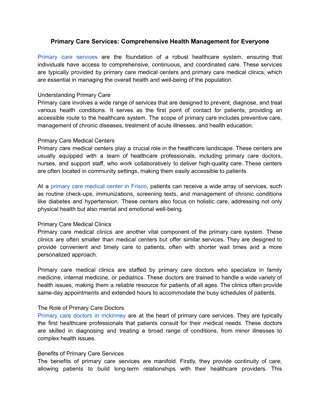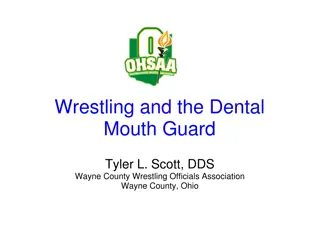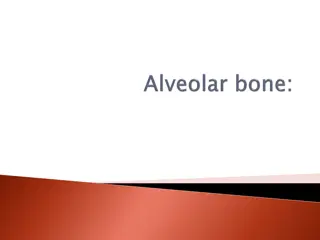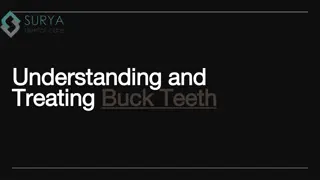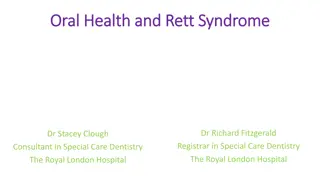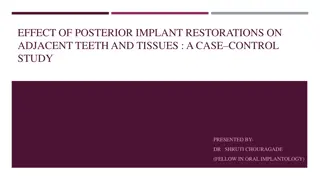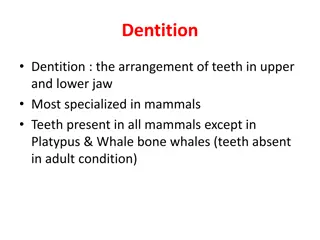
Primary Teeth: Names, Eruption Dates & Functions
Explore the world of primary teeth, including their names, numbers, eruption dates, and functions. Learn how primary teeth compare to permanent teeth and discover key differences between the two sets.
Download Presentation

Please find below an Image/Link to download the presentation.
The content on the website is provided AS IS for your information and personal use only. It may not be sold, licensed, or shared on other websites without obtaining consent from the author. If you encounter any issues during the download, it is possible that the publisher has removed the file from their server.
You are allowed to download the files provided on this website for personal or commercial use, subject to the condition that they are used lawfully. All files are the property of their respective owners.
The content on the website is provided AS IS for your information and personal use only. It may not be sold, licensed, or shared on other websites without obtaining consent from the author.
E N D
Presentation Transcript
OBJECTIVES : 1) Identify name , number , and eruption dates of primary teeth. 2) Describe functions of primary teeth. 3) Compare primary teeth to permanent teeth.
PRIMARY TEETH NAMES / NUMBERS: Twenty primary teeth; --> Ten maxillary and ten mandibular. --> 5 primary teeth in each quadrant. Each quadrant has central incisor,lateral incisor, Canine,first molar and second molar. No premolar in primary dentition. Also referred to as Deciduous teeth,babyteeth, Milk teeth or first teeth. NOT temporary teeth.
PRIMARY TEETH NAMES/NUMBERS:
ERUPTION/EXFOLIATION : Period of eruption for primary teeth is between 6-12months and 2 - 3 years. All primary teeth are usually emerged and aligned by age 3. Exfoliation begins at age 6. Mandibularcentrals are usually first to erupt.
COMPARISON WITH PERMANENT TEETH : Primary anterior teeth and secondary molars resemble the permanent counterparts. Primary teeth have more pronounced cervical ridge. Roots of posterior are more flared(divergent); ->Allowing growth of the permanent teeth forming below them. ->Cervix appears to be more constricted than permanent teeth. Primary crowns have less enamel than permanent teeth,and pulp horns extend more occlusally.
Maxillary Central Incisors : E,F Maxillary Lateral Incisors : D,G Labial crown of incisors is smooth with a straight incisal edge. -> No mamelons. Crown is wide with a cingulumand marginal ridges on lingual surface.
C,H Broad cervial ridge on canine causes cervix to appear constricted, Short,pointed cusp with long,slenderroot.
B,I Number of cusps varies from 2 to 4. No dividing groove on buccal surface. Three roots on all maxillary molars. Occlusal surface has central fossaand mesial triangular fossaconnected by central groove.
A,J Anatomy is same as permanent maxillary first molar. Two buccal cusps divided by buccal groove. Two lingual cusps with a cusp of Carabelli on mesiolingual. Three roots; ->2 buccal,1 lingual.
PRIMARY MANDIBULAR INCISORS: Mandibular Central Incisors : O,P First tooth to exfoliate. Mandibular Lateral Incisors : N,Q Both labial and lingual surfaces are smooth. Slight cingulum marginal ridges on lingual surface.
PRIMARY MANDIBULAR CANINES: M,R Buccal surface has pronounced cervical ridge. Lingual surface has cingulumand lingual ridges.
PRIMARY MANDIBULAR 1ST MOLAR: L,S No definite anatomy, like maxillary first molar ->Only primary tooth not anatomically identical to any permanent tooth. Usually 2 buccal cusps divided by depression(rather than a groove) and 2 lingual cusps. Two long,slenderroots are divergent. Occlusal surface has central groove crossed by buccal/lingual grooves.
PRIMARY MANDIBULAR 2ND MOLAR: K,T Identical anatomy and groove pattern to permanent mandibular first molar. Grooves divide 3 buccal cusps and 2 lingual cusps. 2 long , thin, divergent roots. -> can be twice as long as crown.
IMPORTANCE OF PRIMARY TEETH: Both form and function of primary dentition is important; ->Each primary tooth has same function as permanent tooth that follows. ->Maintains a solid position for permanent tooth replacement. Damage to primary teeth could cause problems with permanent dentition. When both deciduous and permanent teeth are present in the oral cavity its called mixed dentition.



